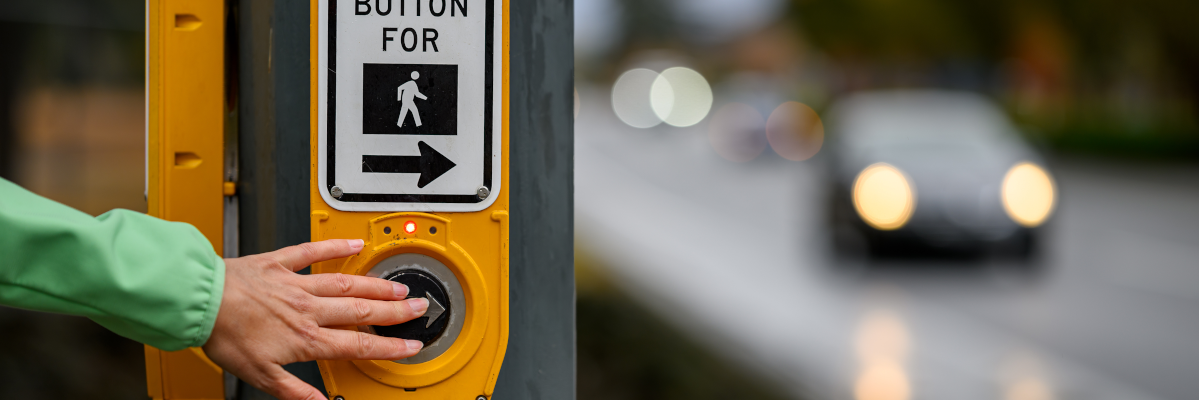By: Ben Akuoko
Advocacy can sometimes feel like an uphill battle, with a lot of effort for little results. But a recent advocacy success in the town of Leamington, Ont., serves as a happy reminder that one voice can make a difference!
In October, Leamington city officials were considering a proposed conversion of accessible pedestrian signals to pedestrian crossovers at Talbot Street West at Fader Avenue, Talbot Street West at MCR Drive, and Oak Street West at the Leamington Trail.
Accessible pedestrian signals (APS) emit a sound and allow people with sight loss to cross streets independently. Pedestrian crossovers on the other hand, use visual cues and require a pedestrian to be able to look out for oncoming traffic. While pedestrian crossovers can reduce driver wait times at intersections by 23 seconds, this comes at the expense of pedestrian safety, particularly for vulnerable road users.
In consultation with a Certified Orientation and Mobility Specialist with Vision Loss Rehabilitation Ontario, CNIB staff, along with a local traffic analyst, delivered a deputation at a Leamington City Council meeting to oppose the conversion of accessible pedestrian signals to pedestrian crossovers.
Citing the necessity of accessible pedestrian signals for residents living with sight loss, the deputation asserted that removing an accessible pedestrian signal would be detrimental to the safety and independence of pedestrians who are blind or partially sighted. As a result of the deputation, council voted against converting the accessible pedestrian signals to pedestrian crossovers, understanding that they support the safety and independence of blind and partially sighted residents.
Through education and collaboration, we can make our communities more accessible for everyone.
For more information on best practices for an Accessible Built Environment for people who are blind or partially sighted, please visit CNIB Clearing Our Path.
